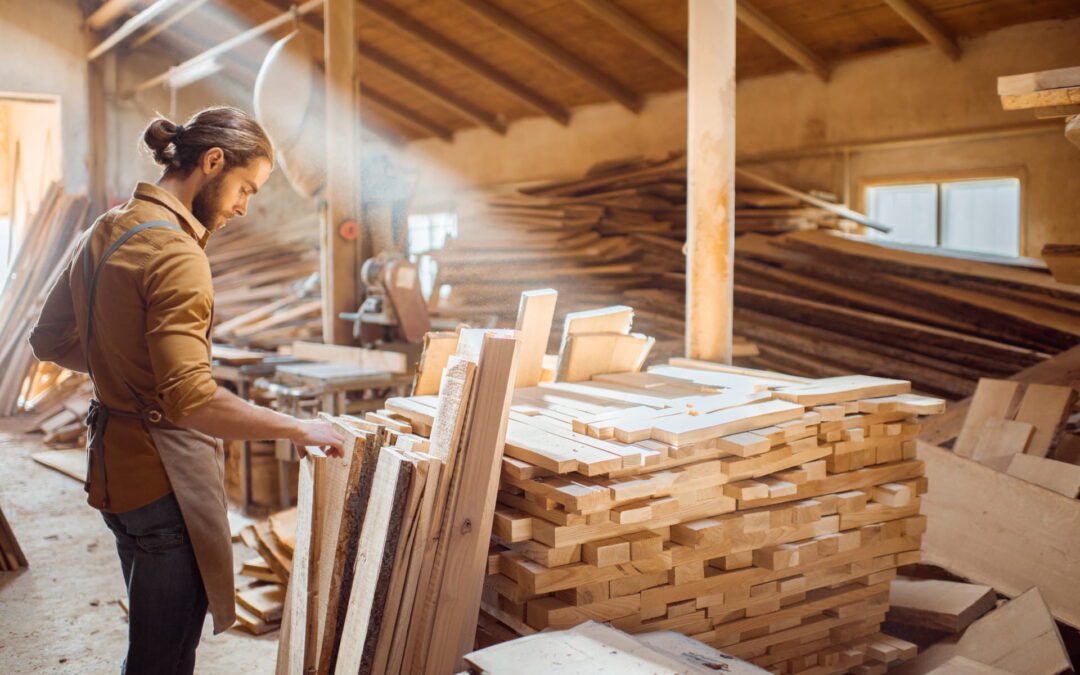Estimating lumber for a project is a crucial first step, and it can be more challenging than it seems. It’s not just about measuring dimensions; understanding different types of lumber, how much is needed, and calculating waste all come into play. Having the right amount of material on hand prevents costly delays and mistakes, so working with a lumber yard for guidance can make a big difference. Whether building a deck, adding a room, or tackling a DIY project, knowing how to estimate lumber needs with help from a lumber yard is essential.
Understanding project lumber requirements
Every construction project has unique demands, and the first step to success is understanding your lumber needs. This involves considering the type of structure, its size, and specific materials. Imagine a scenario where someone is building a shed—knowing how much plywood, 2x4s, and beams they will need is crucial for completing the task efficiently. Lumber yards are valuable resources for determining these requirements based on your project specifications.
- Projects involving load-bearing walls may require sturdier lumber, such as 2x6s, rather than standard 2x4s.
- Specific wood species, like pine or oak, may be preferred depending on strength, availability, and aesthetic preferences.
- Outdoor projects, such as decks, often require treated lumber to resist moisture and rot.
Choosing the right type of lumber for your project
Selecting the proper type of lumber is critical to ensuring a project’s longevity and structural integrity. Lumber comes in many different types, grades, and treatments. For instance, hardwoods like oak are excellent for durability, but softer woods like pine are often used for less demanding projects. A person building furniture might need a different type of wood compared to someone constructing a pergola, but both need quality lumber from a reputable source. A lumber yard can provide insight into the best materials for the job.
- Hardwoods are more durable but often more expensive than softwoods.
- Treated lumber is essential for projects exposed to outdoor elements.
- Lumber grades indicate the quality and appearance of the wood, which influences project aesthetics and costs.
Using project blueprints and plans to estimate lumber
Blueprints and project plans are invaluable when it comes to calculating the amount of lumber required. By studying the dimensions, the square footage, and the structural elements of a project, it’s possible to create a detailed estimate. A general rule of thumb is to measure twice and cut once, but when estimating, it’s essential to get accurate measurements from the start. Lumber yards often have experience helping people translate their plans into material lists.
- Use the square footage of a project to calculate the number of boards needed.
- Count specific materials for different parts of the project (e.g., floor joists, roof rafters).
- For large projects, estimating by board feet is a reliable method to avoid shortages.
Consulting with lumber yard professionals for accurate estimates
Speaking with professionals at a lumber yard can significantly improve the accuracy of your lumber estimates. These experts have seen countless projects and can provide insight based on real-world experience. They can help avoid common pitfalls, like underestimating material needs or selecting the wrong wood type for the environment. Whether it’s a major renovation or a small DIY job, getting a second opinion from an experienced lumber yard professional can save both time and money.
- Lumber yard staff can offer advice on choosing the correct quantity and type of wood.
- They can identify potential issues, such as underestimating material for curved or custom projects.
- Many lumber yards also offer services like cutting boards to specific sizes, reducing on-site waste.
Planning for lumber overage and waste
No matter how precise your calculations, there’s always a chance of needing more material than originally planned. Wood waste happens due to cuts, mistakes, and natural defects in the lumber. Adding a little extra to your order ensures you won’t run short. Builders often recommend purchasing 10% more than the estimate to account for this. Lumber yards understand this need and can help you calculate the appropriate buffer for overage and waste, ensuring the project goes smoothly from start to finish.
- Adding an extra 10-15% is a common practice to account for waste.
- Defects in lumber can lead to unusable pieces, so overestimating helps avoid delays.
- Extra lumber can be used for future projects or repairs if not needed immediately.
Leveraging a lumber yard for delivery and additional services
Beyond providing materials, lumber yards often offer a range of services that can simplify your project. For instance, delivery services ensure the materials arrive on-site without the need for personal transport. Some lumber yards also provide milling services or the ability to cut boards to size before they’re delivered, reducing on-site work. This added convenience can save time and prevent the need for renting specialized equipment.
- Many lumber yards offer delivery services to get materials to the job site.
- Custom cuts or milling can reduce on-site labor and improve precision.
- Some yards provide other services, such as material returns or exchanges for unused wood.
Key takeaways estimating lumber needs with help from a lumber yard
Knowing how to estimate lumber needs for your project is a vital skill. By working with a lumber yard, you can benefit from expert advice, accurate calculations, and additional services that make the entire process smoother. From understanding project requirements to planning for waste and overage, having the right amount and type of lumber can save time, reduce costs, and improve the final result. Lumber yards provide the expertise, materials, and support needed for every step of the project.
- Always begin by thoroughly understanding your project’s lumber requirements.
- Consulting with lumber yard professionals ensures you select the right type of wood.
- Plan for waste by purchasing slightly more than your original estimate.
Frequently asked questions about estimating lumber needs
1. How do I calculate board feet for a project?
To calculate board feet, multiply the length, width, and thickness of the lumber (in inches) and divide by 144. This gives you the board feet for one piece of wood.
2. What’s the difference between treated and untreated lumber?
Treated lumber is chemically treated to resist rot, insects, and moisture. It’s ideal for outdoor use, while untreated lumber is generally used for indoor applications.
3. How much lumber should I buy to account for waste?
It’s common practice to buy 10-15% more lumber than estimated to cover mistakes, cutting, and unusable pieces.
4. Can a lumber yard help with custom cuts?
Yes, many lumber yards offer custom cutting services to specific sizes, which can save time and reduce waste during construction.
5. What types of projects typically require hardwoods?
Projects requiring high durability and aesthetics, such as furniture, flooring, and cabinetry, typically use hardwoods like oak or maple.

